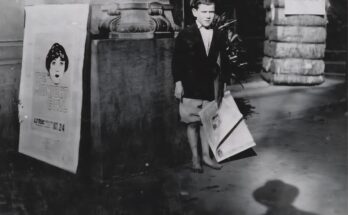Benjamin van Dam was born on 28 May 1935 in the northern Dutch city of Groningen. He came into the world during a time of relative peace in the Netherlands, a country that prided itself on its liberal democratic values and social stability. Benjamin was born into a Jewish family, the son of Luis and Fanny van Dam, and had a sister named Jenny. For the first few years of his life, Benjamin likely enjoyed a typical childhood filled with the joys of family life, school, and community in a quiet Dutch town.
However, the political landscape of Europe was rapidly changing, and the rise of Nazi Germany brought with it dark clouds that would soon spread across the continent. When Germany invaded the Netherlands on 10 May 1940, Benjamin was just five years old. The Dutch Jewish community, which had long been integrated into society, suddenly found itself targeted by a regime that systematically stripped them of their rights, livelihoods, and dignity.
As the Nazi occupation tightened its grip on the Netherlands, Jewish families were forced to register with the authorities, wear the yellow star, and eventually faced deportation. In July 1942, the Nazis began mass deportations of Dutch Jews to the east, using Camp Westerbork as a transit camp. Life in Westerbork was harsh, marked by overcrowding, uncertainty, and the looming fear of transport to death camps.
On 19 October 1942, seven-year-old Benjamin van Dam was deported from Westerbork to Auschwitz along with his parents, Luis and Fanny, and his sister Jenny. Auschwitz, located in occupied Poland, was the largest of the Nazi concentration and extermination camps. While Luis van Dam was selected for forced labor and registered upon arrival at the camp, the rest of the family—Fanny, Benjamin, and Jenny—were not registered, indicating they were murdered immediately in the gas chambers.
The fate of the van Dam family is tragically typical of countless Jewish families deported during this period. Children like Benjamin, considered unfit for labor, were often the first to be murdered upon arrival. His life, full of promise and innocence, was brutally cut short before he even had the chance to grow up, learn, or dream of a future. His sister Jenny, whose age is not recorded here, likely shared a similar fate.
Luis van Dam, despite surviving the initial selection process, did not survive the inhumane conditions of Auschwitz. Whether through exhaustion, starvation, disease, or execution, he too perished in the camp. The entire van Dam family was destroyed, their names added to the long list of those who were annihilated simply because of their Jewish heritage.
Today, the memory of Benjamin van Dam and his family is preserved through records, memorials, and the ongoing efforts to document each individual victim of the Holocaust. Remembering Benjamin is not only about honoring a young boy lost too soon but also about acknowledging the devastating impact of the Holocaust on families, communities, and humanity itself. Each name, each story, is a reminder of what was lost—and what must never be allowed to happen again.


